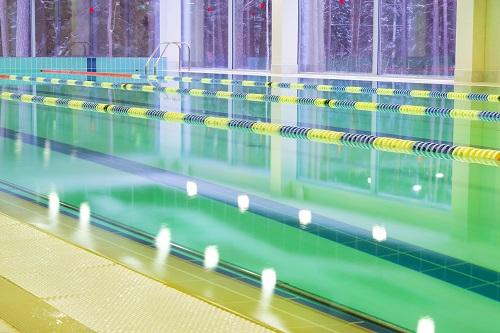

A so-called perfect storm of factors has left the aquatics industry scrambling. While one part of the shortfall relates to demand (on the residential consumer side, more people are staying home and enjoying the pools, swim spas and hot tubs they added during last summer’s lockdown), another part of it is supply.
Forbes Magazine notes, “As reported by Liz Hampton and Jessica Resnick-Aultright for Reuters last August, the Biolab Lake Charles facility in Louisiana erupted into flames after Hurricane Laura hit. This led to the shutdown of one of the major chlorine suppliers until the spring 2022, leaving only two current manufacturers of chlorine tablets in the U.S.: Occidental Petroleum and Clearon Corporation.”
Note to anyone who hasn't figured this out yet.: Having one-third of your supply chain suddenly cut off is suboptimal, particularly going into a busy season.
And just in case anyone has forgotten the health risks posed by unsanitized water (and admittedly, it would be easy to forget, considering the health risk we’re still facing), chlorine is necessary to knock out algae and dangerous microbes like cryptosporidium, legionella and brain-eating amoeba.
Because pools are not able to host swimmers if the chlorine level in the water is too low, and because this will be a nationwide shortage, the problem may require multiple solutions – at least that is what Michigan-based Allen Curtis of The Pool Guy told MSNBC he expects to see.
The product that is expected to be in short supply is the tablet and powdered form of chlorine. Liquid and gas chlorine supplies are currently unaffected; however, as pool owners and managers find themselves short of one thing, they’re likely to try another, ultimately causing a drain on a wide range of supplies.
″[I expect pool owners] will have to go from tablets to powdered chlorine, from powdered chlorine to liquid chlorine, from liquid chlorine to non-chlorinated shocks and things,” Curtis said. “And I do believe that all of those are going to literally run out.”
“We started buying early, way early, and stockpiled as much as we could,” he added. “We won’t last more than probably mid-May, or late May, and we’ll be out of chlorine.”
Aquatic Facility Training & Consultants CEO Rudy Stankowitz told MSNBC he has worked in the industry for more than 30 years and worries what he calls “Poolmageddon” could have an even more sinister effect.
“Chlorine also helps prevent swimming pools from becoming a hotbed for mosquitoes and associated diseases, as well as aiding in preventing unsafe conditions that could contribute to drowning — such as cloudy water,” Stankowitz said.
The shortage is not expected to affect major competitions, says Dean Ekeren, PhD., Director of National Events for USA Swimming.
“We have not heard of any concerns from our major facilities. Our partners who are installing the temporary pools for the Olympic Trials in Omaha (Myrtha Pools and Spear Corp) do not anticipate any problems. The Trials pools will use Calcium Hypochlorite and Spear is not experiencing any shortages with their products.”
It’s at the local and neighborhood levels that the shortage will likely be felt as swim leagues and meets in smaller facilities may be using pools that use tablet and powdered chlorine. In order to avoid closing pools again, managers are frantically trying to source chlorine.
Another draw on the chlorine supply is the number of backyard pools, hot tubs and spas that Americans put in when quarantine cancelled their plans. According to Atlanta-based research firm Pkdata, there are 5.2 million residential inground pools in the U.S. and 255,000 commercial pools. And Stankowitz estimated that 60 percent to 70 percent of those use chlorine tablets.
The rebuild of the BioLab Lake Charles facility, therefore, can’t come soon enough.
“We know how essential our products are to everyday families at home ... that’s why we are investing $170 million in rebuilding our BioLab facility — to be even bigger and better. Once complete, the plant will operate at 30 percent greater production capacity,” said a spokesperson for BioLab’s parent company, KIK Consumer Products.
Another frustration is bound to come this summer if pool time becomes unavailable. The Olympics always produce a “bounce” effect in the sports viewed by Americans. Swimming and diving have long led the pack in popularity after the Games, with more children signing up for lessons and more adults returning to pools to exercise after the Games are over.
The supply-and-demand is expected to result in a 70 percent increase in prices, according to financial services company IHS Markit. In some places, this increase is already being noticed, and some supply companies are limiting the amount of chlorine that can be purchased.
And while there are alternatives to chlorine (including salt, copper and silver ionization systems, as well as several others), converting is complicated and expensive, particularly for a larger facility. The use of UV and ozone can cut down on the need for chlorine – but it can’t replace it.
As previously noted, not all pools use the same chlorination method – and some use other methods of sanitizing their water. But the domino effect of the shortage, as small pools struggle to stay open for the summer of 2021 and move from solution to solution in order to do so, could see shortages up and down the chemical – and equipment – supply chain. SDM will continue to follow this developing issue.

